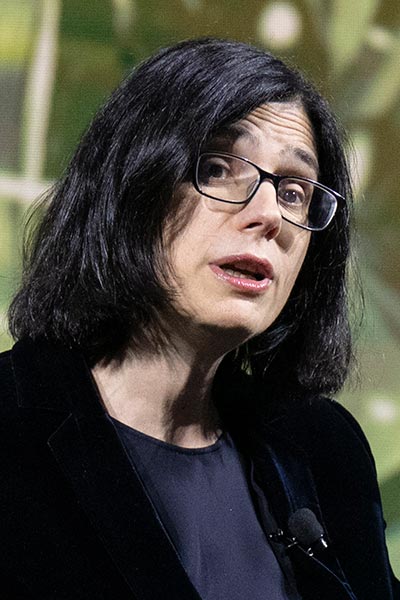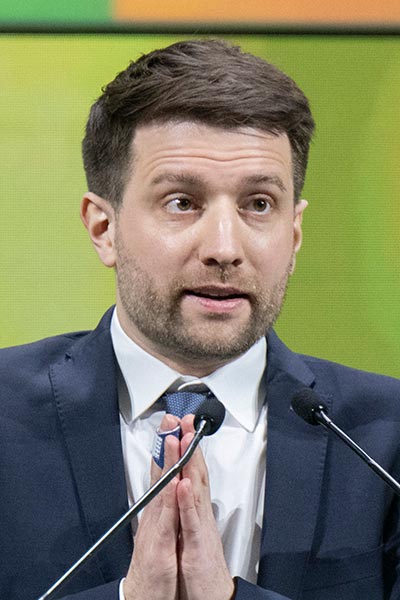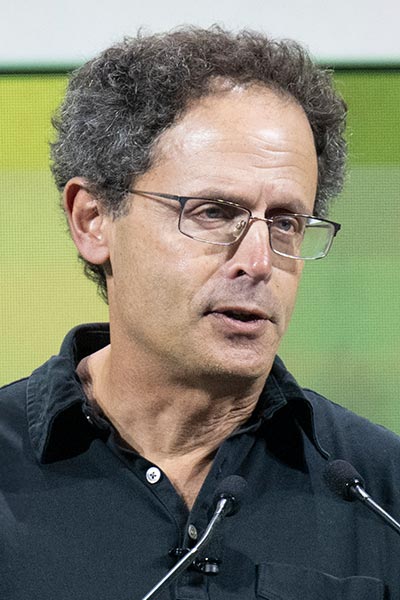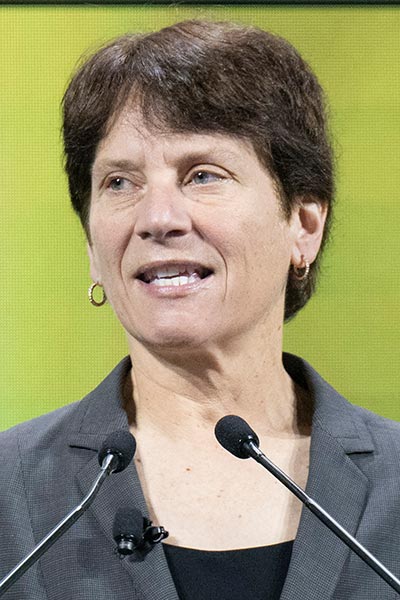Opening Plenary Session showcases cutting-edge technological advances opening new frontiers in cancer science
Sunday morning’s Opening Plenary Session: Inspiring Science, Fueling Progress, Revolutionizing Care featured a distinguished panel of cancer scientists who described evolving and emerging technological advances—from cell atlases and artificial intelligence-based biomarkers to proteomics and bioorthogonal chemistry—that are driving new discoveries and new directions in cancer research.
The session, which followed the Opening Ceremony at the American Association for Cancer Research Annual Meeting 2024, can be viewed on the virtual meeting platform by registered Annual Meeting participants through July 10, 2024. Annual Meeting Program Committee Chairs Keith T. Flaherty, MD, FAACR, and Christina Curtis, PhD, MSc, were chairs for this session.
From cell atlases to medicines

Aviv Regev, PhD, FAACR, head and executive vice president of Research and Early Development at Genentech, opened the session with a discussion of how advances in genomic sequencing are fostering the development of data-rich cell atlases and what that data could mean for new insights into cancer biology and novel therapeutics.
Over the past several years, Regev said, a technological revolution in single-cell genomics has allowed researchers to look at increasingly large numbers of individual cells. More recently, spatial transcriptomics methods have allowed for the profiling of tumor cells in situ.
“As a result of these methods, we are now able to profile cells across the human body—across different systems, different organs, different tissues—and as a result of that, the human cell atlas has collected well over 100 million cells from human patients,” Regev said. “These data are growing at a remarkable scale, and amongst these data, there are many millions of tumor cells—malignant cells and cells from the tumor microenvironment—across many tumor types and many patients.”
These advances, she said, have led to the potential for extrapolating complex genomic data from common and simple tools such as hematoxylin and eosin (H&E) staining using artificial intelligence (AI). Regev also emphasized the potential utility of AI for analyzing data from high-throughput drug screens and gene perturbation screens.
Artificial intelligence-based biomarkers in cancer histopathology

Jakob Nikolas Kather, MD, MSc, a professor of clinical artificial intelligence at Technical University Dresden in Germany, discussed how AI applications can be used to derive prognostic and predictive information from routine pathology slides.
Kather said that feeding digital pathology images into “end-to-end” deep learning approaches can help researchers discern biologically and clinically relevant properties of tumors, which may influence clinical decision-making in precision oncology by predicting responses to treatments such as cancer immunotherapy.
Recent advances in AI technology—such as foundation models, multimodal models, and large language models—are enabling researchers to tackle biomarker prediction challenges that were previously difficult, if not impossible, to solve, he said.
“What we are seeing is that we can use our established tools, our biomarker prediction models that we have trained in the past specifically for histopathology and we can embed them in multicomponent pipelines,” Kather said. “I think we are living in very exciting times. The field is moving very, very fast, and it is our job to take these new technologies and to translate them into new scientific insights and clinical usefulness for our cancer patients.”
Activity-based proteomics: Cancer target and ligand discovery on a global scale

Benjamin F. Cravatt, PhD, a professor and the Norton B. Gilula Chair in Biology and Chemistry at The Scripps Research Institute, discussed activity-based protein profiling (ABPP) and its use in discovering drug candidates for cancer-relevant proteins. Briefly, ABPP utilizes chemical probes that fluorescently label potentially druggable domains across the proteome. Researchers can then screen putative drugs to see what proteins they may interact with by looking for sites where the tested compound outcompeted the probe.
He described how ABPP may change the paradigm for what are considered “druggable” and “undruggable” targets for cancer therapy. Information gained from the application of ABPP to generate covalent small-molecule interaction (or “ligandability”) maps of cancer proteomes has guided the discovery of potential first-in-class drug candidates for cancer-relevant proteins, Cravatt said.
“We have discovered, using chemical proteomic methods, stereoselective and site-specific covalent ligands for a cancer-relevant transcription factor,” Cravatt said.
Next generation cancer therapies enabled by bioorthogonal chemistry

Carolyn R. Bertozzi, PhD, FAACR, the Baker Family Director of Stanford ChEM-H, the Anne T. and Robert M. Bass Professor in the School of Humanities and Sciences, and professor, by courtesy, of Chemical and Systems Biology and of Radiology at Stanford University, concluded the presentations with a discussion of glycobiology and next-generation cancer therapies enabled by bioorthogonal chemistry, which refers to high-yielding chemical reactions that proceed rapidly and selectively in biological environments without interfering with a molecule’s normal functions.
“There is one particular glycophenotype which is quite pervasive in tumors. It’s the overproduction of glycans that terminate with a sugar called sialic acid, one of our monosaccharide building blocks,” Bertozzi said.
Researchers have long known that tumors overproduce sialoglycans but have struggled to understand why, she said. Bertozzi and colleagues found that sialoglycans can activate immune checkpoint-like signaling in immune cells, dampening antitumor immune responses.
Today, using bioorthogonal chemistry approaches, Bertozzi and colleagues are designing drugs that can target these sialoglycans by trimming them off the surface of cancer cells. They are also studying what happens inside a cancer cell that leads to the overproduction of sialoglycans and how that process is connected to other aspects of cancer cell biology.
Register Today for the AACR Annual Meeting 2025
Don’t miss the most important cancer meeting of the year, April 25-30 in Chicago, Illinois. In-person and virtual registration packages include full access to live sessions, Q&A, networking, CME/MOC credits, and more.

